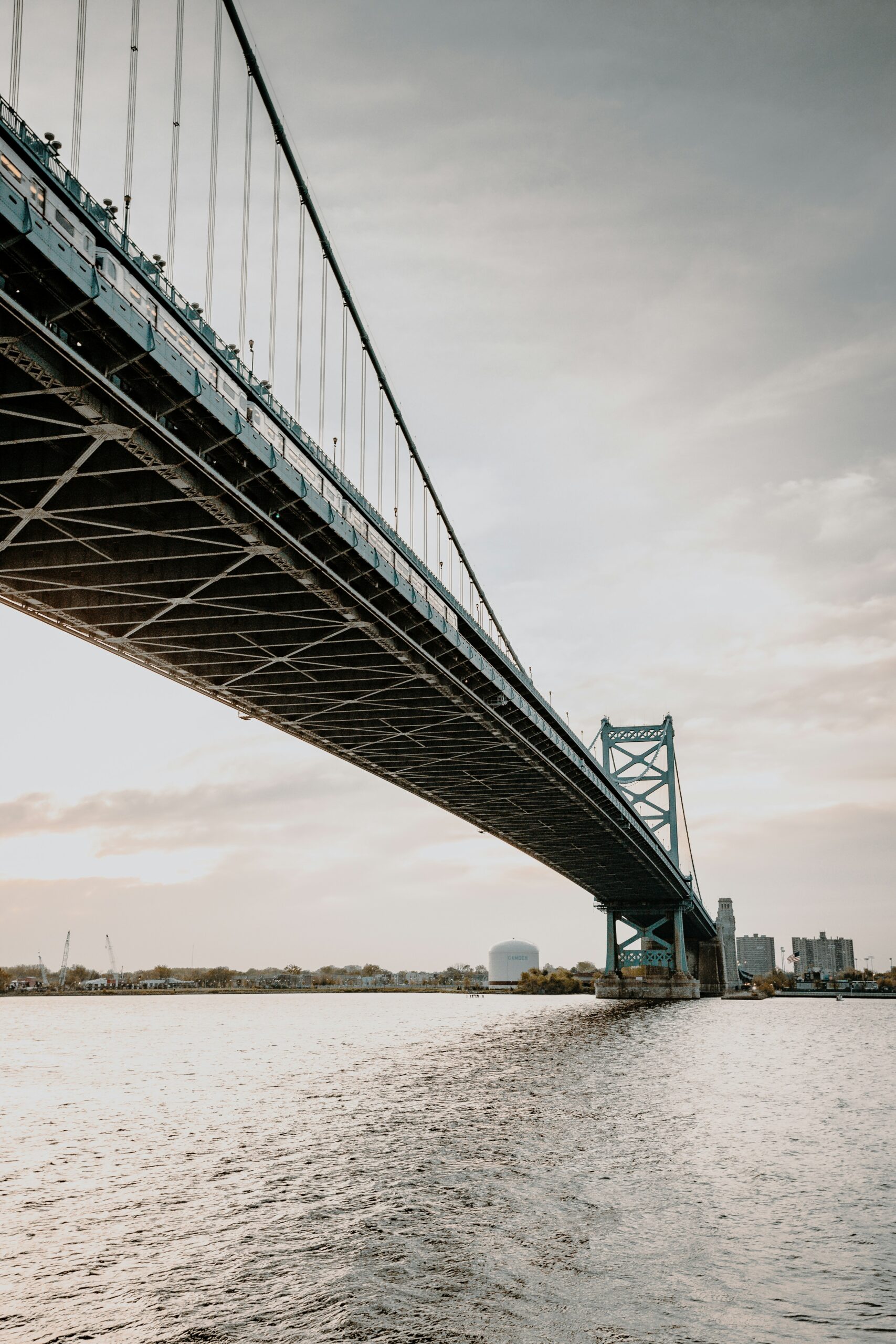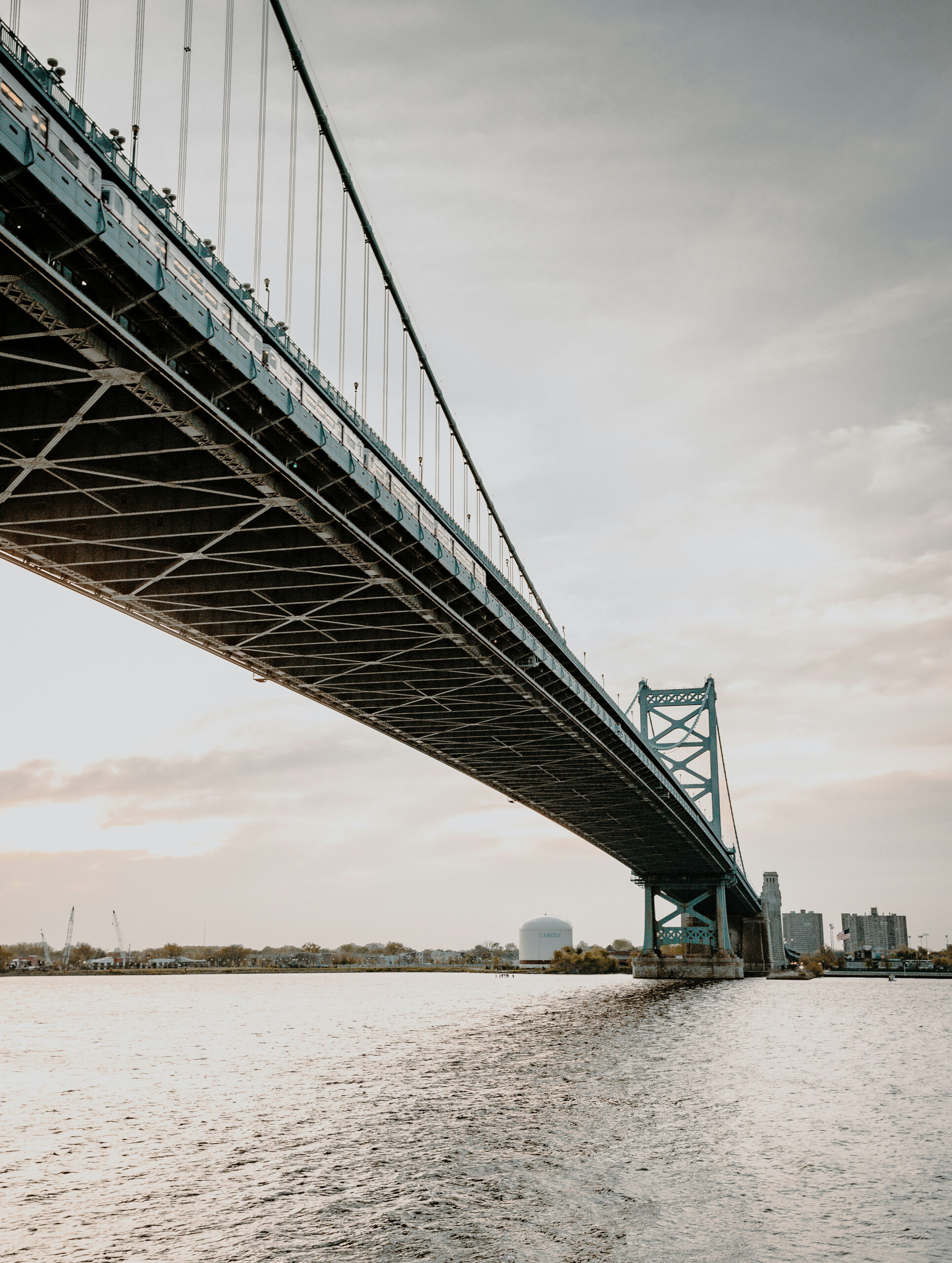Have you ever looked down into the depths of the Delaware River and thought, “It could be deeper”? The likely answer is no. Just last fall, however, The Port of Philadelphia released part of a 15-year plan to expand the port that includes dredging and deepening the Delaware River an additional five feet to a 50-foot depth. They say the deepening will allow for larger vessels and make the port more competitive. These are points the Delaware Riverkeeper Network has heard before, back when we fought to stop the deepening of the Delaware River to 45 feet.
Many reaches of the Delaware Estuary were naturally much shallower than the current 45-foot depth. Deepening the river was a response to World War I, World War II and industrial interests wanting bigger ships to be able to access the ports. The Delaware River was deepened four times between 1898 and 1942. Then came the 1980s, when the U.S. Army Corps of Engineers announced their proposal to deepen the Delaware River for a fifth time, all the way to 50 feet. An injection of $500 million into the economies of Pennsylvania, New Jersey and Delaware was promised, but the damages and risks were yet to be determined.
The Delaware Riverkeeper Network is not one to go along quietly when it comes to scraping and cutting up our beautiful Delaware River — no matter the proposed depth. It soon became clear to project proponents that a 50-foot depth raised serious concerns. In response the Army Corps of Engineers made a pivot — proposing and pursuing deepening to 45 feet.
Originally, the Corps, the ports and industry argued that deepening was needed to bring crude oil up the river at a lesser cost. At the time, about 70% of the nation’s crude oil came to the East Coast via the Delaware River. But, the crude oil industry and oil refineries were actually shutting down, and their shuttering undercut the argument that deepening the river to 45 feet was of economic value to the U.S. taxpayers who would primarily fund the work. The U.S. Government Accountability Office did three different analyses on the economic value of the proposed deepening, each one concluding that the project was not cost-beneficial. Both New Jersey and Delaware opposed deepening because of the harms it would inflict on the environment; neither state would be a primary beneficiary of the supposed benefits, and yet it was their communities that would be stuck with 16 million cubic yards of dredge spoils. Dredge spoils contain contaminants and toxins ranging from PCBs and PFAS to heavy metals. When dredging begins, these toxins can be reintroduced into the river system.
In addition to the toxic contamination, deepening and dredge spoil disposal threatens irreparable harm to a variety of species of fish, shellfish and wildlife, including ecologically and economically important species such as oysters and Atlantic sturgeon. Channel deepening can also exacerbate the harms of sea level rise, by, for example, altering the dynamics between the fresh water of the river and the salt water of the ocean such that the river’s salt line moves further upstream, threatening drinking water intakes.
As the cost-benefit defense of the project began to slip, the project proponents sought out a new justification. The Corps and the Philadelphia Regional Port Authority tried to argue that deepening was needed to support container ships, which were increasing in depth and size. Never mind that existing ports with a 50- or 60-foot depth and located closer to the ocean were better able to accommodate container ships. A Delaware Riverkeeper Network expert analysis exposed that a primary driver of the new benefits calculation was the delivery of meat that was originally dropped at New York ports and trucked to our region. Post-deepening, this meat would be dropped at the Delaware River ports and trucked in the opposite direction to New York. In other words, taxpayers would be investing millions in a deepening project to change the direction of meat deliveries. The Army Corps continued to claim benefits to the shipping container industry, but, time after time, the purported value of deepening was debunked.
For over 20 years, we used good advocacy, scientific backing and economic evidence to document and demonstrate the harms of the deepening project and the lack of economic rationality behind it. But in 2010, the politics of the day overrode us and the deepening went forward. It will take time to demonstrate the harmful ramifications of deepening to 45 feet, but the science developed during the project review process is substantial and will continue to grow as harms manifest.
Deepening proponents have now returned and are seeking another deepening project to take the river’s navigation channel to the originally proposed 50 feet. The Delaware Riverkeeper Network is already mobilizing. We hope you will join the effort to inform and protect our river and region so that, this time around, sound science and rational thinking — rather than political override — will drive the final outcome.










